“My aim is to create a program that is relevant to our times, not to make a quick buck”
Interview with Patricia Lara, Founder and Director of The RYDER Projects
The world of literature led Patricia Lara, founder and director of The RYDER Projects, into the world of art, allowing her to fully embrace human creativity in its most tangible form. Since her first steps into the art world, her ambition to create dialogue around art and its interplay with contemporary society has only grown stronger. With the opening of her London-based gallery The RYDER Projects in 2015, she constantly aims to display works of art relevant to our times, whether they are easy to sell or not. Meet Patricia Lara, an ambitious gallerist led by intuition rather than the desire “to make a quick buck.”
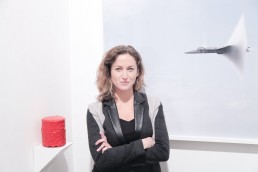
Name: The RYDER Projects
Location: London
Opening year: 2015
When did you first get interested in art, and how did it lead you into the business of being a gallerist?
I’m originally from Barcelona and although it’s a nice city, I wanted to move out of my comfort zone. After finishing my degree in Humanities, I went to Paris to study Comparative Literature at La Sorbonne. Perhaps peculiarly, it was there that my interest in curating art started. In a way, comparing texts was similar to comparing works of art, but the physicality of art would allow me to jump from the constraints of a world of lines on paper to the three dimensions of the space – to create a tangible path between works in dialogue. I moved to London and started working for an art advisor while taking a Masters in Contemporary Art Theory at Goldsmiths. These experiences gave me a more global perspective on the art world, how market and ideas could somehow relate. I worked for a commercial gallery in Mayfair for a while and a small non-profit space in Angel. I used to carry a notebook with names of artists I was interested in as well as ideas for exhibitions I thought were relevant to our times. After a while, I found a space on Herald Street very close to my apartment and decided to open The RYDER – which borrows its name from the apartment block that I still live in.
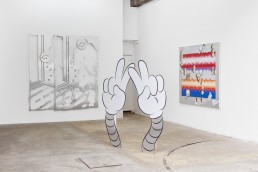
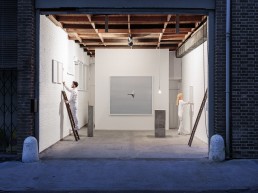
How would you describe the program and vision of your gallery? What sets The RYDER Projects apart?
With good exposure, due to its location (Herald Street), the space focuses on the presentation of artists not represented in UK, whose practices encourage the visitor to reconsider our values and preconceived ideas about the world surrounding us. Not restricting by medium, nationality, or concepts addressed, my aim is to give exposure to artists whose practices refer to the here and the now, artworks that could only have been produced in our current time and which speak about the world that surrounds us and the issues we currently face. There is, however, a focus on performance art and process-based works. I’m interested in participation rather than representation. Being relatively small at 50sqm, the tall space has a large roller shutter that makes up one wall, which we often use as the curtain when a performance is presented to the audience in the street.
Our exhibition program consists of curated dialogues and solo presentations, and it is often complemented by public talks and events to encourage dialogue and critical reflection. In the same way, we consider our participation in international art fairs crucial, most recently ARCO Madrid.
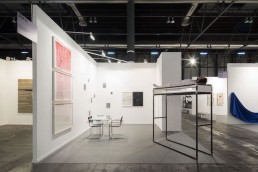
You represent a diverse group of artists. Are they somehow related in their artistic practices?
We represent the work of Andrea Galvani, Rosana Antolí, William Mackrell and Jaime Pitarch. They all share an interdisciplinary practice, working with one medium or another to create the ideal ’container’ for the content addressed. We live in a world with a multiplicity of formats and channels of communication, working with artists restricted to a single medium would be an anachronism. They also share an interest in actions that are sometimes defined as performance, meaning live actions, and other times as process-based works.
Where and how do you find new artists to exhibit, and what do you look for when considering a new artist for your gallery?
I constantly follow certain art writers that I believe have a good eye, and I often find artists through their writings, but it is also of course about keeping your eyes open: Visiting exhibitions, whether public or private, has always proven the best way to find artists I believe in. Sometimes it is by visiting the collections of my clients that I will discover great talent. Once we have a pre-selection of artists, we look at their CV’s to make sure their work is backed by museums, art critics, and public curators. The next step is to meet the artist – it is always true that a great personality and engaging conversation translates to an interesting art practice, both conceptually and aesthetically. Finally, if I am looking to represent them, I need to find strong personalities that I observe will always fight for what they want, artists that will walk in the same direction as the gallery.
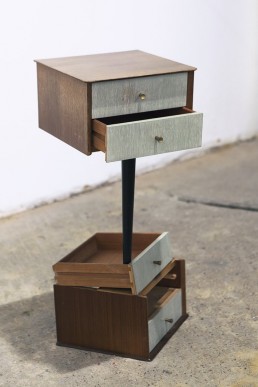
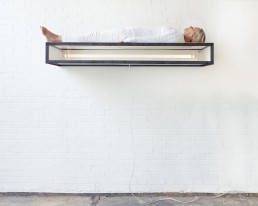
Your exhibition program has a strong focus on performance, video, installation, and sculpture. Can you elaborate on the opportunities and challenges of presenting artworks in these types of media?
I always say I make my life difficult by selecting bodies of work that are not always easy to sell. Nonetheless, this is often the result of a natural and conscious decision. I see the potential of their careers in the relevance of the issues they address. My aim is to create a program that is relevant to our times, not to make a quick buck.
In addition to your exhibitions, your program includes public talks and events. What are you hoping to achieve through a more direct dialogue with your audience?
Although exhibitions are a great way to discover art and the ideas behind it, they can easily fall into mere presentations without reflection or context. Our aim is to give a platform to artists, curators, and art critics to debate the works and engage more deeply with the audience.
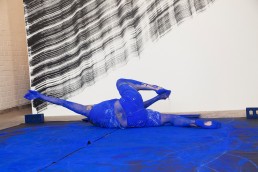
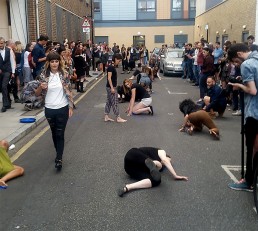
With a bigger part of the (art) world taking place online, do you think it creates more dialogue or make people more immersed in their own activities on the screen?
As with everything, the increasing presence of the art world online has its advantages and disadvantages. The Internet gives us the possibility of being more informed and seeing more, but this tool also entails the risk of passiveness, making the art consumer a mere receptor of ideas with no critical analysis of his/her own. Seeing a work in flesh and getting to know the practice of the artist through engaging conversation with him or the gallerist is always a unique and fulfilling experience that cannot take place online.
What role do art fairs play for you as a gallerist and what is your experience of the so-called ‘art fair fatigue’ caused by the booming number of fairs constantly popping up across the globe?
At the end of August, the gallery will take part in CODE, Copenhagen for the first time, and we are interested to meet this new audience. We have already been part of more than seven art fairs, the last one being the curated section of ARCO Madrid, invited by curators Ilaria Giani and Stephanie Hessler. Our experience in Madrid was amazing; we presented the work of British artist William Mackrell and sold out with strong media attention. Art fairs still feel like an important place to meet collectors, curators, and critics, even if the market for art fairs is a bit bloated.
What are the future plans for The RYDER Projects?
We represent the work of four artists and we have passed the three year mark. We plan to maintain a strong focus on our exhibition programme and the slow and conscious selection of artists to represent, but we will gradually increase this number. In terms of art fairs, we will take part in ARCO Madrid again this year and in the video art fair LOOP in Barcelona.
The RYDER Projects
19a Herald Street
London E2 6JT
info@theryderprojects.com
+44 (0) 7719 110 821
Opening Times
Wednesday to Sunday 12-6pm
Read more here.
About Code Art Fair
The third edition of the ambitious art fair Code will take place August 30 – September 2, 2018, in Copenhagen, Denmark – one of the world’s most vibrant and forward-looking capitals. As the only international art fair in Scandinavia, Code presents leading as well as emerging galleries from all over the world. Get an overview of this year’s participating galleries here.
Address
Bella Center
Center Boulevard 5
2300 København S
Opening Hours
Thursday, August 30 | Public Vernissage 17-20
Friday, August 31 | 11-20
Saturday, September 1 | 11-20
Sunday, September 2 | 11-18
Read more about Code here.
Get your free copy of Artland Magazine
More than 60 pages interviews with insightful collectors.